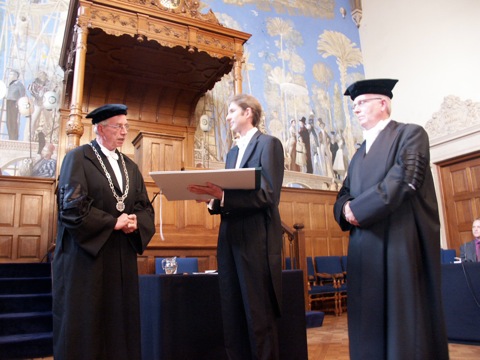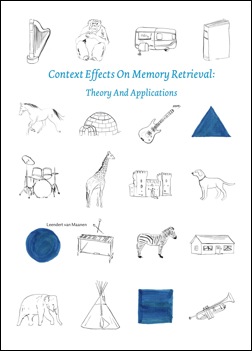Recent publications
December 2009:
Van Maanen, L., Van Rijn, H., & Borst, J.P. (2009). Stroop and Picture-Word Interference are Two Sides of the Same Coin. Psychonomic Bulletin & Review, 16(6), 987-999. pdf
A paper that discusses a peculiar difference between the Stroop effect and picture-word interference with the general opinion that these effects are similar.
January 2010:
Van Maanen, L., Van Rijn, H., Van Grootel, M., Kemna, S., Klomp, M., & Scholtens, E. (2010). Personal Publication Assistant: Abstract recommendations by a cognitive model. Cognitive Systems Research, 11(1), 120-129 (Special Issue on Brain Informatics). url pdf
A paper that introduces a system that provides relevant scientific literature based on the user’s own publication record. The system is based on a formal theory of human memory, arguing that recommender systems that model a user’s memory capabilities are useful in predicting relevance. This paper is the direct result of a course I taught in 2007 in which the students and I explored various options of using models of memory in recommender systems!
Expected January 2010:
Van Maanen, L., & Van Rijn, H. (2010). The Locus of the Gratton Effect in Picture-Word Interference. TopiCS in Cognitive Science 2(1), 168-180. pdf
This paper shows that sequential effects in picture-word interference may influence the locus of the interference effect. In addition, it discusses a model that accounts for the observed effects.
Ph.D. thesis finished!
Winner Best Student Paper at ICCM
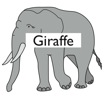
The paper describes how cognitive control may determine not only the effect size of picture-word interference, but also the stage in a task in which the interference occurs. Using a RACE/A model we show that the apparent shift of the interference effect from a late to an early effect locus may be the result of a decrease of the cognitive control on reading the word (of the picture-word stimulus).
Postdoc at Multi-Agent Systems group
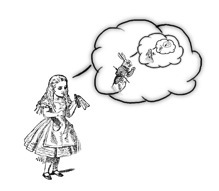
Speaker at ACT-R Workshop this summer
In ACT-R’s declarative memory, each chunk has a certain activation level that determines the retrieval latency and the probability of retrieval for a chunk. For many cognitive modeling efforts, this information is precise enough to simulate memory processes. In some cases, however, a more fine-grained process model of declarative memory retrievals is required. For instance, information that becomes available during the retrieval of a chunk may affect the retrieval latency of that chunk. A prototypical example of this is the Stroop task. In the Stroop task, naming the color of a word that describes another color (e.g., the word “red” written in green letters) takes on average longer than naming the color of a neutral word (e.g., the word “dog” written in green letters). This is even the case if the color and the word are temporally separated (e.g., if the color word is presented after the color itself), which is difficult to explain with the default ACT-R declarative memory theory.
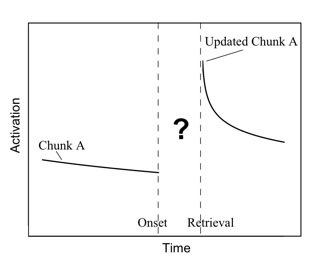
We developed an extension to ACT-R (called Retrieval by Accumulating Evidence in an Architecture or RACE/A, Van Maanen, 2009; Van Maanen & Van Rijn, 2007) that provides a specification of the activation dynamics during the declarative memory retrieval process. RACE/A describes memory retrievals as a sequential sampling process (e.g., Ratcliff, 1978). During a memory retrieval the activation of all chunks is continuously updated based on spreading activation from stimuli and other chunks in declarative memory. A chunk is retrieved if the activation of that chunk exceeds the activation of the others by a critical ratio (e.g., Luce, 1986). As a result, if the activation of multiple chunks increases simultaneously, the retrieval process will take longer. In the case of the Stroop task, spreading activation between the chunk representing the color and the color word causes both chunks to accumulate activation, leading to a longer retrieval process than if word and color are unrelated (e.g., “dog” and the color red), in which case there is no spreading activation.
In this talk, I will go into the principles underlying RACE/A, and I will provide examples of tasks that can be explained using RACE/A. RACE/A is available as a separate module for ACT-R (which can be downloaded from http://www.ai.rug.nl/~leendert/race). The module enables cognitive scientists to develop ACT-R models with a more fine-grained theory of declarative memory.
References
- Luce, R. D. (1986). Response times. New York: Oxford UP.
- Ratcliff, R. (1978). A theory of memory retrieval. Psychological Review, 85(2), 59-108.
- Van Maanen, L. (2009). Context effects on memory retrieval: Theory and applications. Doctoral thesis, University of Groningen, Groningen.
- Van Maanen, L., & Van Rijn, H. (2007). An accumulator model of semantic interference. Cognitive Systems Research, 8(3), 174-181.

